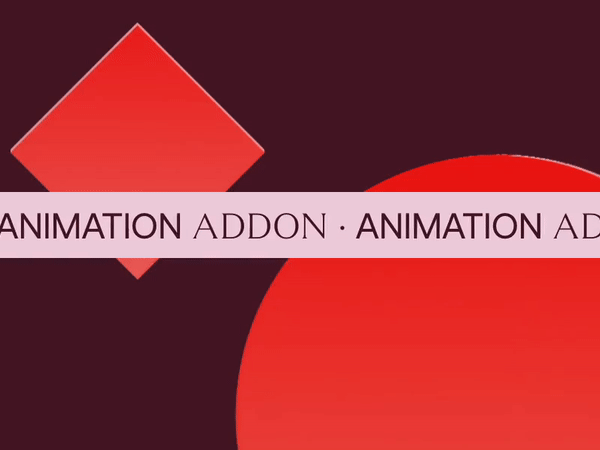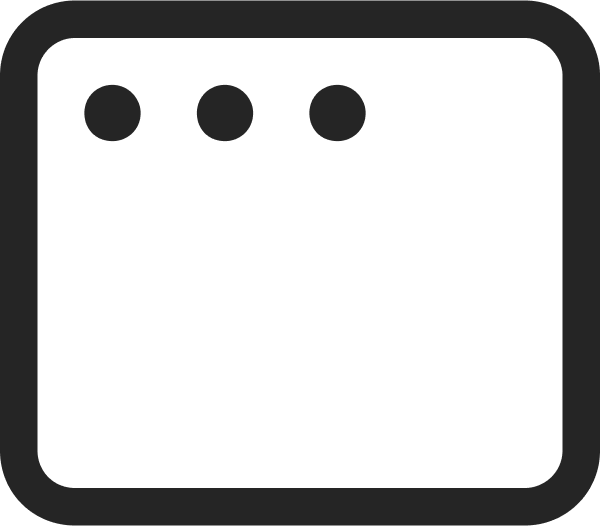Landing Page Animation 101: Examples, Tips, and Tools
October 11, 2022
Words by Jeff Cardello
Landing page animations could be the difference between your page converting or flopping.
Landing pages exist as a microcosm within a brand’s digital presence. Designed for direct communication, they need to offer a visually engaging user experience geared towards a specific goal— whether that’s making a purchase, registering for an event, subscribing to a newsletter, or signing up for a free trial.
That’s where landing page animations come in. When used carefully, animations can boost landing page conversion rates and engagement rates; used poorly, they can completely undermine them. Use this landing page animation guide to make sure you only ever experience the former.
What is Landing Page Animation?
Landing page animation adds instant excitement to the screen, creates a sense of atmosphere, and can provide visual cues that highlight information or help people to navigate through it. However, there is a bit of an art to it. Landing page animations work best when they complement the rest of a design—they should never distract or make the user experience more complicated.
Landing page animations can be set in motion automatically as the page loads, as well as being triggered by user-based actions—from clicking, hovering, or scrolling. Whilst landing animations look complex—and in many cases are still tricky to code—no-code web builders like Vev enable designers and savvy marketers to add advanced animations to their landing pages by themselves without involving developers.
How Landing Page Animation Makes a Difference
Websites lacking any sort of visual dynamics keep people at a distance. By adding animation to your landing pages, you can engage readers to actively “participate” in your content, all while nudging them closer towards taking a specific action. Here are just a few reasons why landing page animations are such a great design choice.
Enhance the Visual Design
Landing page animation makes for a more aesthetically pleasing experience. We’re used to seeing motion in the media that we consume. Static visual elements can become increasingly monotonous—particularly for longer-form content—and will struggle to engage users.
Create Immersive Web Content
Animation enhances the visual and textual information we consume. It can help to evoke emotion, bring personality, and create atmosphere. Users are more likely to buy into the story you are presenting if they feel like they are part of it.
Increase Engagement
Landing page animation draws visitors into a user experience and adds momentum to their journey through the page. The best animated experiences actually encourage you to play around and stay longer on the page—all of which sends positive signals to search engines on the quality of your content.
Maximize Space
Animating your landing page enables more information to live within less space. Landing page animations such as carousels, horizontal scrolling sections, and labeled images make it possible to display more content in less space and keep the user engaged.
Highlight Information
Setting key text and images into motion instantly makes them stand out from your static content. In this way, you can use animations to guide users’ attention, highlight various CTAs, and make them irresistible to click.
Improve Navigation
Beyond pushing CTAs, landing page animation can provide useful navigational cues for exploring your page—which is particularly useful for more ambitious and original web designs. It can point visitors in the directions you want them to go, provide visual feedback when they’ve completed a micro-interaction, and signal a transition into a new section.
Landing Page Animation Best Practices for UX
Landing page animation functions best when it feels like a natural part of a web design. Some key things to keep in mind when building landing pages with animations include:
- Animations shouldn’t obstruct the user journey. Instead, they should have a sense of fluidity that keeps people moving.
- Timing is everything. Animations shouldn’t be so long that they drag on and on, or happen so fast that people miss them.
- Use animation with care and purpose. Too many animated effects can be overwhelming and make it hard for visitors to know what they should be paying attention to.
Types of Landing Page Animation
Now that we’ve covered the basics of how landing page animation works, let’s take a look at the different types of landing page animation that designers are using to enhance their work.
Animated Text
Landing page animation could take the form of animated text. Words sliding into place, fading in or out, letters scaling up or down, as well as text or background color changing. Text animations can be activated by hovering, scrolling, clicking, or loading a page.
The above website for Telenor, built with Vev, begins with a text slide-in effect that springs into action while the page is loading. In the background, different photos change from one to the next underneath the text that reads, “Listen Up!”. Integrating animation into a hero section is an effective way to build excitement within the first interaction a user has with your landing page.
Similarly, this landing page for Shakuro’s line of Halo speakers uses text animations to put visitors in control of their journey. As you scroll text spins, scales up and down, as well as shoots in from different directions. Landing page animation makes this a more active user experience than if the text was static.
Scrolling Animations
Scrolling animations are one of the most popular landing page animations going. As the name suggest, they’re triggered when a visitor navigates up or down the page. They can take the form of text animations, but can also bring motion to images, graphics, and other visuals. Fade-ins and fade-outs, parallax scrolling, animated transitions, and effects that change the scale and orientation of text and images not only make things more visually interesting but add a sense of interactivity.
The Vev-built example from Ruter (displayed above) unveils text through a scroll-triggered fade-in. Displaying text one block at a time is an effective way of breaking content up, as well as providing a visual cue to signal transition from one section to the next.
Used completely differently, WebGi Jewelry takes a hybrid approach to its scrolling animations. Text and visuals are set into motion through every scroll, for a dazzling user experience that shows off the beauty of their jewelry.
This WWF landing page built with Vev’s pre-coded animations also features a mix of scroll-triggered animations. As you make your way through this design text and photos slide into place and visual elements fade in. Though there’s much going on in terms of action, it never feels like too much. Everything works together in harmony for a smooth user experience.
Hover Animations
Hover animations are triggered when a user moves their cursor over select elements, prompting them to change colors, scale up or down in size, change background images, and more. Often used in a more muted way, hover animations are a great choice for bringing focus to text and visuals through micro-interactions.
The landing page above for Prime-X backpacks uses a hover animation that gently scales product images. This not only visually highlights them, but adds a sense of depth and interactivity.
Contra utilizes hover effects that are decorative rather than functional. Hovering over the floating images gently shifts them, which complements the airiness of this design.
Animated Graphics and Illustrations
Animated graphics and illustrations range from understated, subtle movement through to bold, unignorable explosions on the page. When deciding on what landing page animation to include in your design, Lottie animations would be a route to consider. Compared to GIFs, Lottie animations are a high quality, clean addition to any design. You can create your own Lottie animations in Adobe After Effects, or skip the hassle and download free, customizable animations on LottieFiles. We created our own landing page specifically to showcase the magic that can be made with Lottie animation in Vev.
In their sustainability report landing page, Service Now have combined Vev’s text fade-in animations alongside data visualizations to striking effect. Almost every section in this design has something that’s touched with motion, making it a lively and active user experience. One of the most eye-catching examples of landing page animation here is the use of animated charts, which perfectly suits this type of long-form web editorial content.
This product landing page for Ruska opens with a cartoon dog flying across the screen. There’s a variety of other eye-grabbing visuals scattered throughout, and this multi-image animation of their dog bowl not only looks wonderful but serves a practical purpose in showing how their product works. Proof that landing page animation can be both functional and fun.
Animated Backgrounds
Animated backgrounds place graphics, photos, or videos behind content in the foreground to create an instant cinematic effect. It’s a great landing page animation for focusing in on a story or key messaging whilst pairing text with visual aids.
New Zealand based News1 published this personal essay written by John Campbell about a friend and travel partner who passed on. It’s a touching piece, full of photos and reflective writing. There are fade-in effects throughout, and this background image that transitions from one image of delicious food to the next works so well with John’s memories of eating with his friend.
Dissolution, a science fiction inspired video game, uses three-dimensional background images of a spacecraft for a deeply immersive experience. Scrolling down the page feels akin to moving through it, like being dropped straight into the video game.
Parallax Scrolling
This scroll-based animation is all over the internet. The parallax effect creates an instant sense of dimensionality simply by varying the speed at which different design elements move. Generally, what’s in the foreground moves faster than what’s in the background creating the illusion of depth.
Human Rights House pulled off a classic parallax effect in this annual report (pictured above) using Vev’s ready-made parallax image element. For those looking to take parallax to the next level, you can also play around with our multilayer parallax sections.
This gorgeously stylized landing page for SEF.Growth features colorful illustrations of hot air balloons that take flight on scroll. Take note of how the layers that make up desert and mountain landscapes shift at different speeds—a perfect example of how to use multi-layer parallax to adjust the reader’s sense of perspective through a motion-based story.
Galleries and Slideshows
Landing pages are generally short, meaning designers have to maximize screen space. While not technically “true” animations, image galleries and slideshows, as well as horizontal-scrolling sections, are great ways to inject novel movement into your landing page design.
Vacao slides out information in a horizontal panel that shows the different vacation packages that they offer. The sense of motion created by changing a vertical scroll experience to a horizontal one in this way instantly makes these options stand out.
This product landing page for the book Culture Built My Brand shows another inventive way to use horizontal space to introduce movement. In this case, they’ve used a simple carousel block to group testimonials from fans of the book.
How to Add Animation to Your Landing Page in Vev: Animated Text
Design Visually Without Coding
We would never discourage anyone from using code to create their own animated text, but there is an easier way. Vev lets you create animations visually without coding—select and style a pre-coded text animation to get started. All it takes is the following steps:
- From the Design Editor, head to the Add Menu (Shortcut: M)
- Search and select either “Animated Letters” or “Animated Words”
- Click and drag the element to your canvas
- Play with our preset animations to style and customize your text
If you’re technically savvy, Vev does also give you the ability to build on top of these components—or code completely new ones—using React through our Code Editor and CLI

The Simple Way to Add Landing Page Animation
Landing pages deserve some love. The time and cost involved in coding animations may have stopped you before, but with Vev's extensive library of pre-built animations, you can jump straight to customizing. Focus fully on designing a landing page that captures and keeps your readers' attention.
Want More Inspo?
Get our monthly newsletter straight to your inbox.
You can always unsubscribe at any time.
Privacy Policy



















